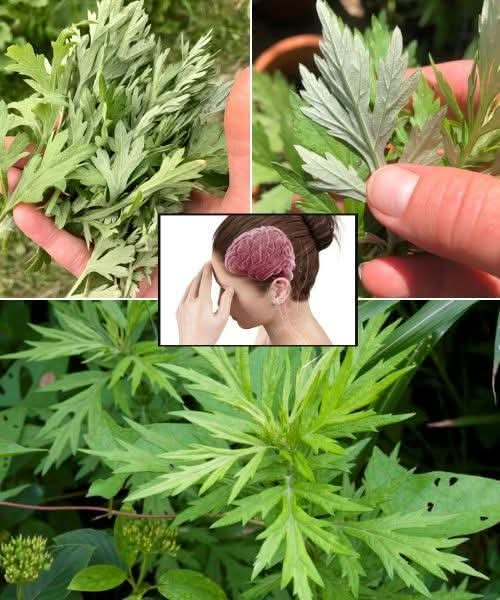Below is an overview of mugwort (Artemisia vulgaris)—a hardy, aromatic herb long used in traditional practices worldwide, particularly in Asia and Europe.
While many people enjoy mugwort for its potential wellness benefits, it’s important to note that scientific evidence is limited for some of these uses.
Always consult with a healthcare professional before trying new herbal remedies, especially if you’re pregnant, breastfeeding, or managing chronic conditions.
Mugwort at a Glance
Botanical Name: Artemisia vulgaris
Family: Asteraceae (daisy family)
Common Names: Common mugwort, wild wormwood, felon herb, St. John’s herb
Parts Used: Leaves, stems, and sometimes roots
Mugwort is often prized for its aromatic, slightly bitter leaves. Traditional and folk medicines have employed it in teas.
tinctures, culinary dishes, and smudge sticks, attributing a wide array of purported benefits to this versatile plant.
20 Potential Benefits of Mugwort
Digestive Aid:
Traditionally used to support digestion by stimulating gastric secretions, potentially easing mild bloating or discomfort.
Appetite Stimulant:
Its bitterness may help encourage appetite in those recovering from illness or experiencing poor appetite.
Menstrual Cycle Support:
Some herbalists use mugwort for its reputed uterine-tonic properties, suggesting it might help regulate or stimulate menstrual flow. (Avoid if pregnant.)
Moxibustion in TCM:
In Traditional Chinese Medicine, dried mugwort leaves (moxa) are burned near acupuncture points to warm and invigorate the flow of Qi.
Calming Effects:
Mildly sedative in some folk applications, it’s sometimes taken as a tea before bed to support relaxation.
Dream Enhancement (Oneirogen):
Mugwort has a long history of use in folklore for promoting vivid or lucid dreams—often placed under pillows or used as a bedtime tea.
Anti-Inflammatory Potential:
Certain compounds in mugwort (e.g., flavonoids) are thought to exhibit mild anti-inflammatory properties, although more research is needed.
Antimicrobial and Antifungal Properties:
Some studies suggest extracts may inhibit certain bacteria and fungi, contributing to mugwort’s historical use for skin or minor wound care.
Respiratory Relief (Traditional):
Used in steams or smudging for mild respiratory discomfort. The plant’s aromatic nature may help clear congestion.
Mild Diuretic Effects:
Mugwort might gently encourage urination, aiding in the body’s natural elimination processes.
Liver and Gallbladder Support:
In some folk traditions, mugwort is believed to help the liver and gallbladder function more efficiently by promoting bile flow.
Joint and Muscle Comfort:
Occasionally applied topically (e.g., as an infused oil) to soothe minor aches and muscle stiffness.
Relaxing Foot Soaks:
Warm foot baths with mugwort can be found in some spa-like treatments or traditional folk practices for relaxation.
Natural Pest Repellent:
Its strong aroma is sometimes used as a deterrent for insects and moths in gardens or cupboards.
Possible Mood Support:
Anecdotal evidence suggests a sense of calm or uplift for some users, though formal research is scarce.
Skin Cleansing (Traditional Use):
Mildly astringent properties might help with oily or breakout-prone skin when used in washes or gentle steams.
Culinary Herb:
Mugwort is used in certain cuisines (particularly East Asian) to flavor soups, rice cakes, and sweets, reputed to add a pleasant bitterness.
Spiritual or Ritualistic Use:
Smudging mugwort has a long folklore history, believed in some cultures to cleanse energy or repel negativity.
Insect Bite Soothing:
A paste of mugwort leaves (sometimes combined with other herbs) is occasionally used on minor insect bites or stings.
Traditional Energy Tonic:
Some forms of traditional herbalism consider mugwort a “tonic” for overall vitality, though modern evidence remains anecdotal.
How to Use Mugwort
Tea (Infusion):
Method: Steep 1 teaspoon of dried mugwort leaves in a cup of hot water for about 5–10 minutes.
Potential Benefits: Supports digestion, relaxation, and possibly vivid dreams.
Caution: Mugwort is quite bitter. Consider honey or mixing with other herbs (like chamomile).
Moxa (Moxibustion):
Method: Dried, fluffy mugwort (moxa) is rolled or formed into sticks and burned near acupuncture points under the guidance of a trained practitioner.
Potential Benefits: Used in Traditional Chinese Medicine for warming meridians and improving Qi flow.
Essential Oil or Smudge Stick:
Method: Mugwort leaves can be dried and bundled as a smudge stick or distilled into an essential oil.
Potential Benefits: Aromatic and may help clear congested airways or create a soothing atmosphere.
Caution: Essential oil is highly concentrated—always dilute before topical use.
Culinary Uses:
Method: Add young leaves sparingly to soups, stews, or certain traditional dishes.
Potential Benefits: May aid digestion, offers a unique bitter flavor.
Caution: Excess consumption can be irritating; mugwort is used more like a spice than a primary vegetable.
Topical Preparations (Infused Oils or Salves):
Method: Infuse dried mugwort in a carrier oil (e.g., olive oil) for 2–3 weeks, then use the oil in salves or lotions.
Potential Benefits: Mild relief for sore muscles, potential anti-inflammatory effect on minor skin irritations.
Precautions and Safety
Pregnancy and Breastfeeding:
Mugwort is traditionally known to stimulate menstruation and should be avoided by pregnant individuals, as it may risk inducing contractions.
Allergies:
Asteraceae Family: Mugwort belongs to the same family as ragweed, chrysanthemums, and daisies. Those with pollen or plant allergies might experience allergic reactions.
Potential Toxicity in Large Amounts:
Thujone Content: Some mugwort varieties contain thujone, a compound that can be neurotoxic in high doses. Normal culinary or herbal doses are usually considered safe, but moderation is essential.
Drug Interactions:
Mugwort may interact with sedatives or medications affecting blood clotting. Consult a healthcare professional if on such medications.
Sensitive Individuals:
Those with chronic conditions (e.g., kidney, liver issues) or children should use mugwort only under professional guidance.
